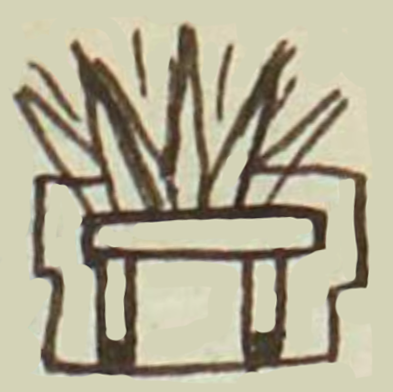Caltonal (MH816v)
This black-line drawing of the compound glyph for the personal name Caltonal (perhaps, “Sun House”) is attested here as a man’s name. The glyph shows a frontal view of a classic house or building (calli). Five or more rays (apparently relating to the sun, tonalli) shine upward from the horizontal lintel at the entrance to what may be a temple (even though this is not labeled a “teopan”). This glyph could be counted as a simplex, but the rays might not necessarily be a part of the architecture, and they are there as a semantic indicator of the meaning associated with the building.
Stephanie Wood
In the glyph below that is provided for the purpose of comparison, the Xochitonal glyph from folio 642 verso, the rays again seem to be more there as an indication of the association of the flower with the meaning of “sun” or “day” than intended to show a physical feature of the flower.
Stephanie Wood
1560
Jeff Haskett-Wood
sol, edificios, rayos, nombres de hombres

cal(li), house or building, https://nahuatl.wired-humanities.org/content/calli
tonal(li), sun or day, https://nahuatl.wired-humanities.org/content/tonalli
posiblemente, Casa del Sol, o Templo del Sol
Stephanie Wood
Matrícula de Huexotzinco, folio 816v, World Digital Library, https://www.loc.gov/resource/gdcwdl.wdl_15282/?sp=707&st=image.
This manuscript is hosted by the Library of Congress and the World Digital Library; used here with the Creative Commons, “Attribution-NonCommercial-ShareAlike 3.0 License” (CC-BY-NC-SAq 3.0).




